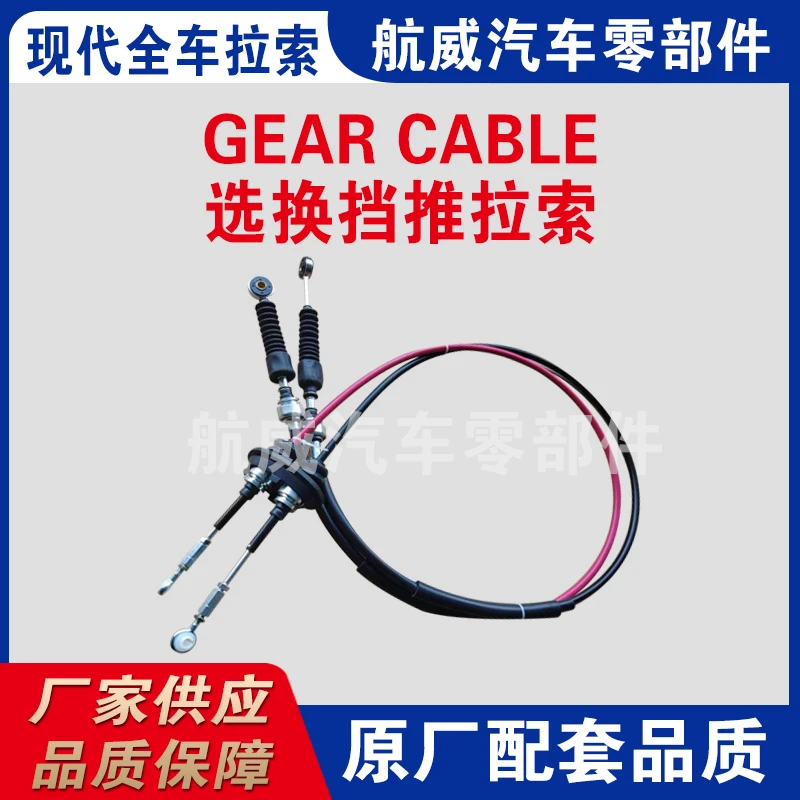gear linkage cable
Understanding Gear Linkage Cables A Comprehensive Guide
In the realm of automotive engineering and mechanics, the gear linkage cable plays a crucial role in the operation of a vehicle's transmission system. This component connects the gear shifter inside the cabin to the transmission assembly, allowing the driver to change gears seamlessly. Understanding the function, construction, and maintenance of gear linkage cables can greatly enhance a driver's knowledge of their vehicle and promote better maintenance habits.
The Function of Gear Linkage Cables
The primary purpose of a gear linkage cable is to transmit the driver's intentions from the gear shifter to the transmission system. When a driver moves the gear stick, the linkage cable either pulls or pushes a series of mechanisms within the transmission, engaging the desired gear. This process is essential for ensuring that the vehicle operates efficiently at various speeds and loads. Without a properly functioning gear linkage cable, shifting may become difficult or even impossible, leading to potential performance issues and safety concerns.
Types of Gear Linkage Cables
There are generally two types of gear linkage systems mechanical and electronic. Mechanical gear linkage cables are typically made of flexible steel cables encased in a protective sheath. They operate through a series of levers and pivot points, transmitting the movement directly from the gear lever to the transmission. This traditional system is straightforward and reliable, often found in older models of vehicles.
On the other hand, electronic gear linkage systems, often found in modern vehicles, utilize electronic signals rather than physical cables. These systems employ sensors and actuators to change gears based on the driver’s inputs. This technology enhances precision in shifting and often allows for automated gear changes, contributing to improved fuel efficiency and performance. However, electronic systems can be more complex and may require specialized diagnostic tools for maintenance.
Construction of Gear Linkage Cables
Gear linkage cables typically consist of several components, including
1. Cable Housing This protective outer casing shields the internal cable from damage due to environmental factors and wear.
2. Inner Cable The flexible steel wire that runs through the housing, which transmits the motion from the gear shifter to the transmission.
3. End Fittings These are the connectors at both ends of the cable that attach to the gear shifter and the transmission. They ensure a secure connection and precise movement.
gear linkage cable

Signs of Wear and Maintenance Tips
Like any mechanical component, gear linkage cables are subject to wear and tear over time. Drivers should be vigilant for certain signs that may indicate that the gear linkage is failing
- Difficulty Shifting Gears If the gear shifter feels stiff or unresponsive, it may indicate a problem with the linkage cable.
- Unusual Noises Grinding or popping sounds while shifting gears could suggest that the cable or its fittings are damaged.
- Slippage or Hesitation If the vehicle hesitates when attempting to change gears, it could mean that the cable is not transmitting the motion effectively.
Regular maintenance can extend the life of gear linkage cables. Here are a few tips
1. Inspection Periodically inspect the cables for any visible signs of wear, fraying, or damage.
2. Lubrication Apply appropriate lubricant to the cable and its fittings to reduce friction and wear.
3. Alignment Checks Ensure that the cable is properly aligned and tensioned. Misalignment can lead to additional stress and premature failure.
4. Professional Servicing If you notice any of the warning signs, it’s best to consult a qualified mechanic for a thorough inspection and potential replacement.
Conclusion
In conclusion, gear linkage cables are fundamental components within a vehicle’s transmission system, ensuring smooth and effective gear changes. Understanding their function, types, and maintenance can empower drivers to be more proactive in vehicle care. As technology evolves, both mechanical and electronic gear linkage systems continue to play a significant role in automotive performance and reliability. Regular inspections and prompt attention to any issues will help ensure that your vehicle remains in prime condition, providing a safer and more enjoyable driving experience.
-
Workings of Clutch Pipe and Hose SystemsNewsJun.04,2025
-
The Inner Workings of Hand Brake Cable SystemsNewsJun.04,2025
-
The Secrets of Throttle and Accelerator CablesNewsJun.04,2025
-
The Hidden Lifeline of Your Transmission Gear Shift CablesNewsJun.04,2025
-
Demystifying Gear Cables and Shift LinkagesNewsJun.04,2025
-
Decoding Clutch Line Systems A Comprehensive GuideNewsJun.04,2025
